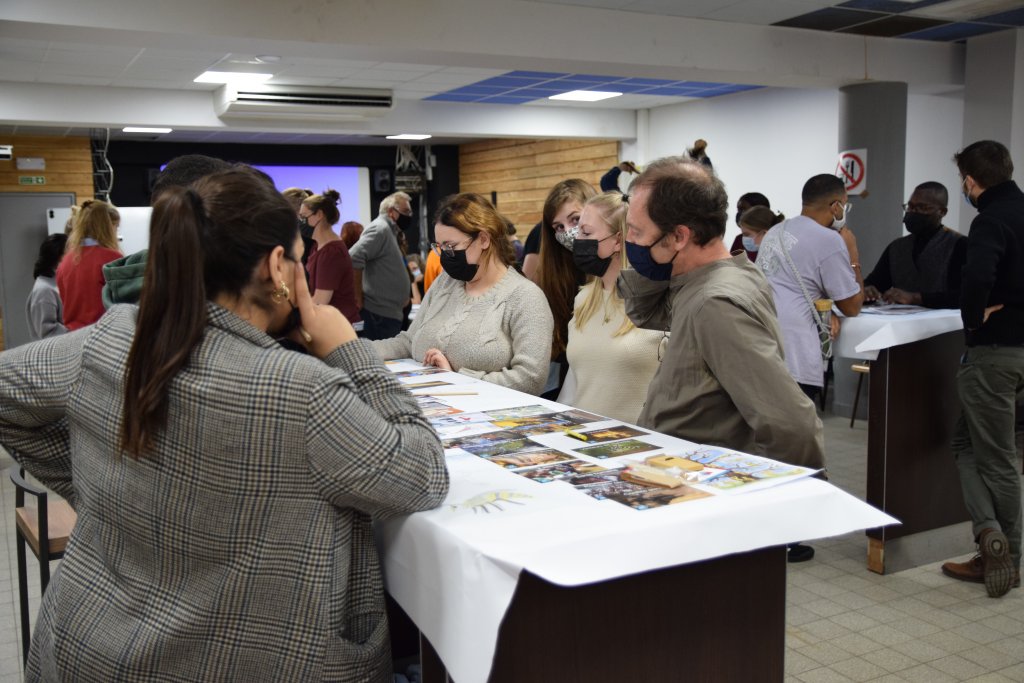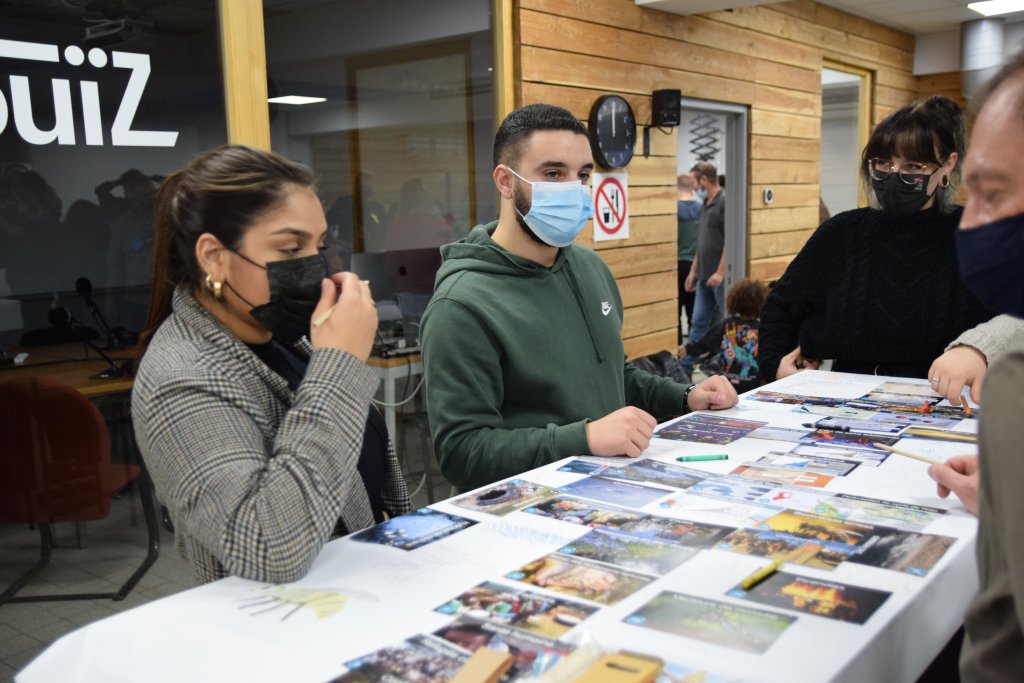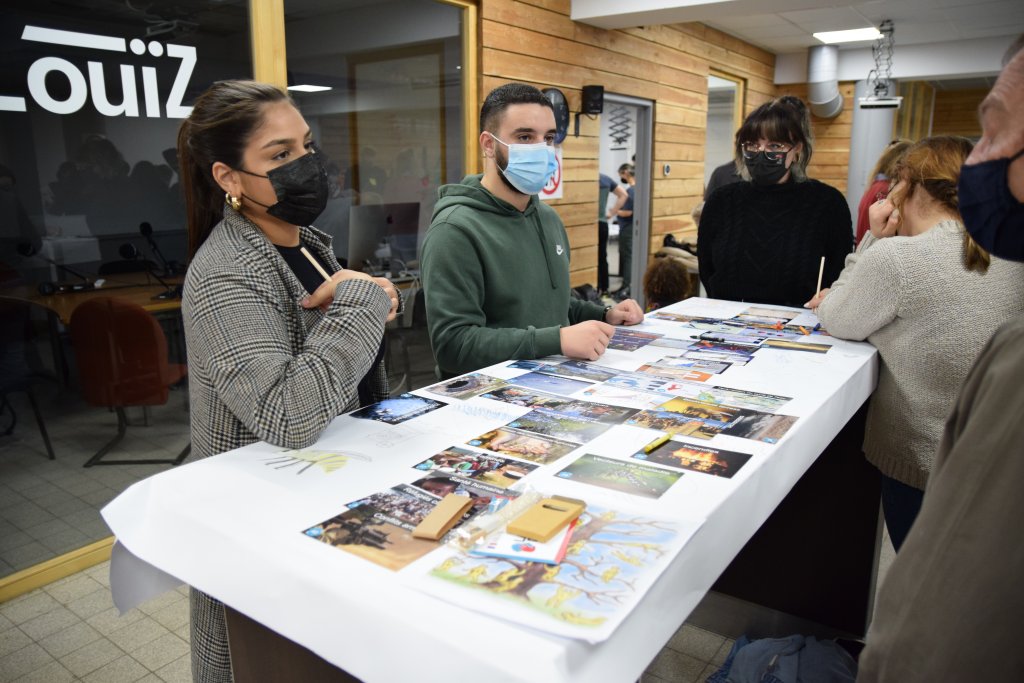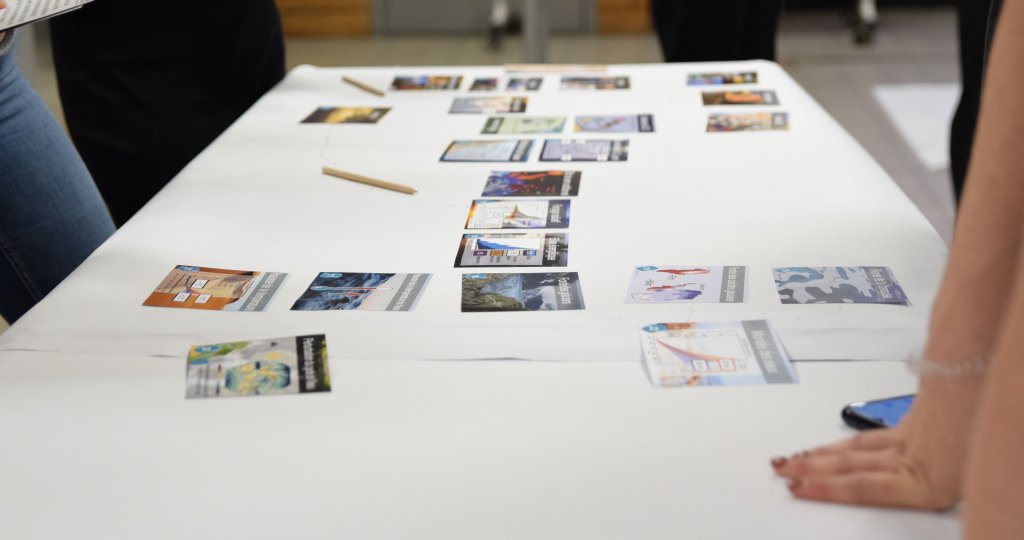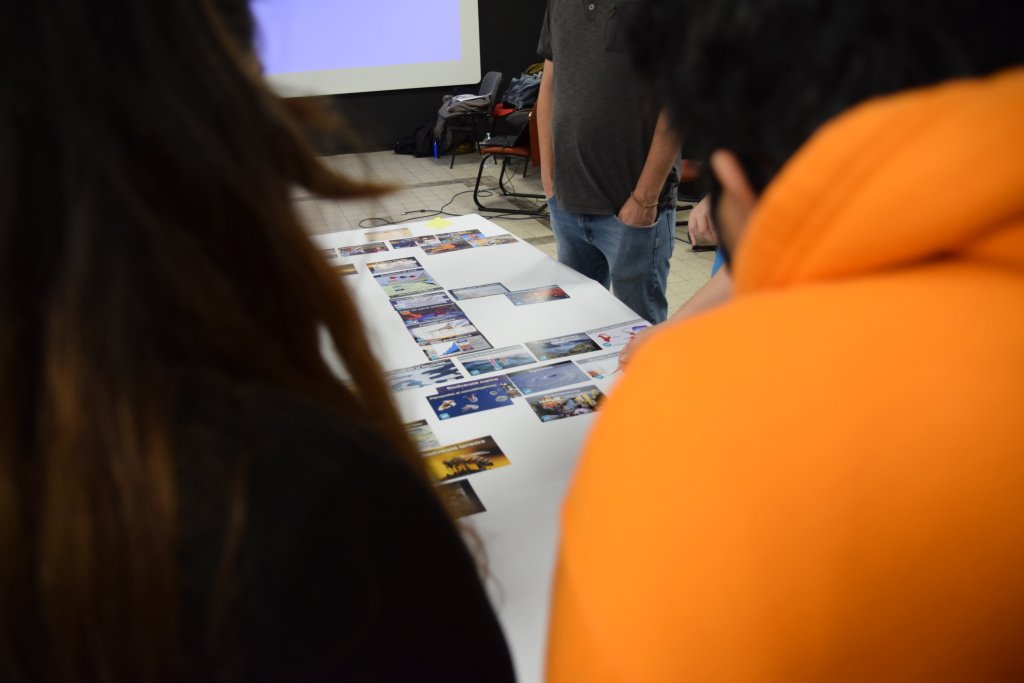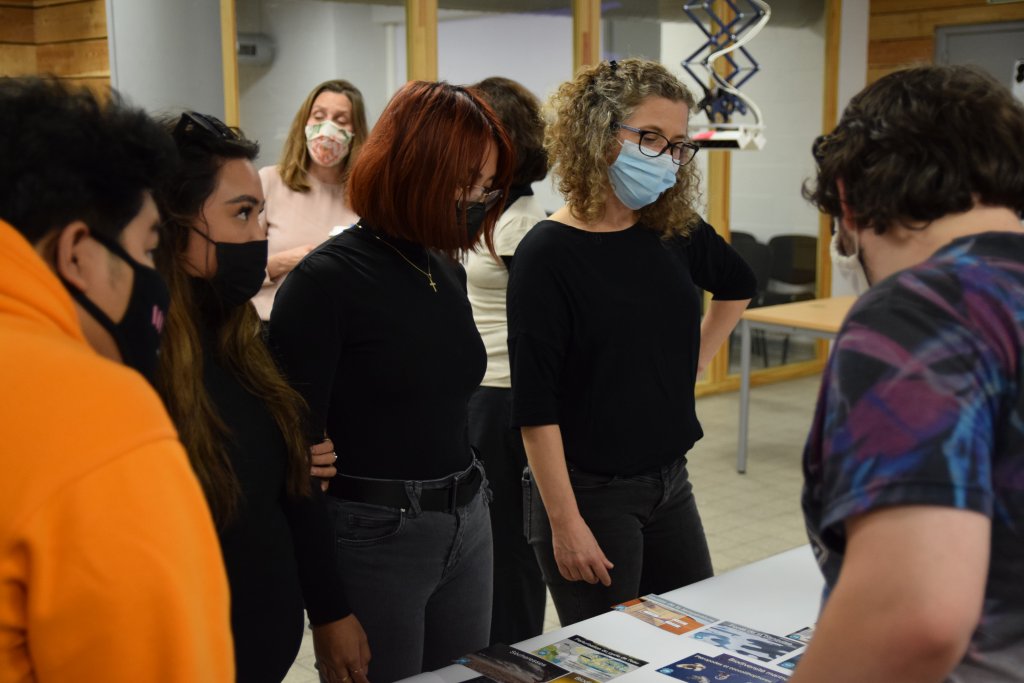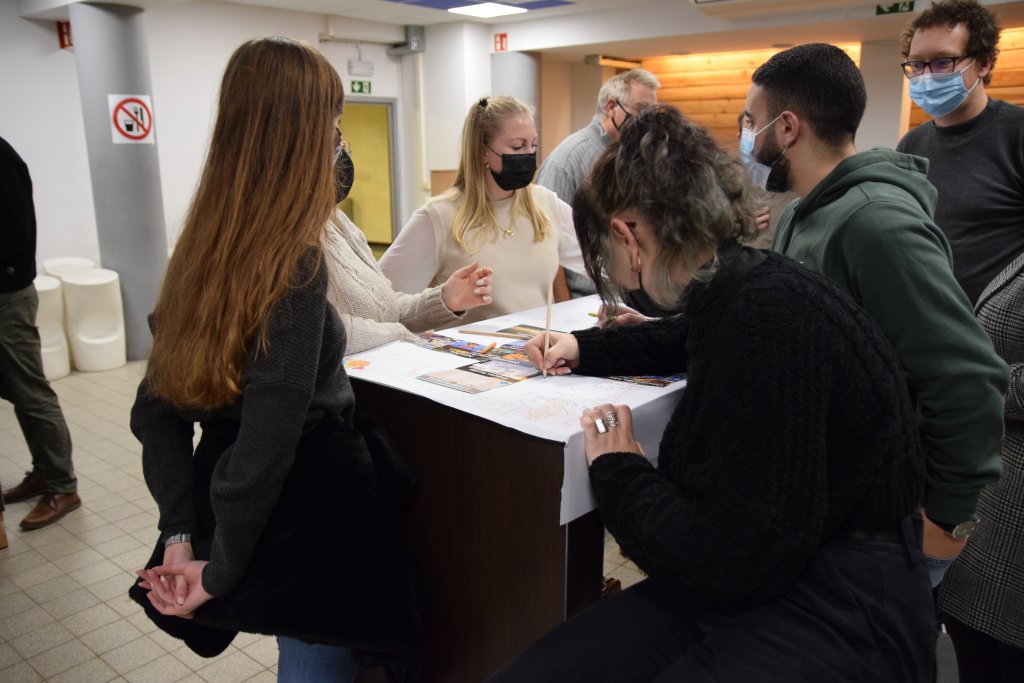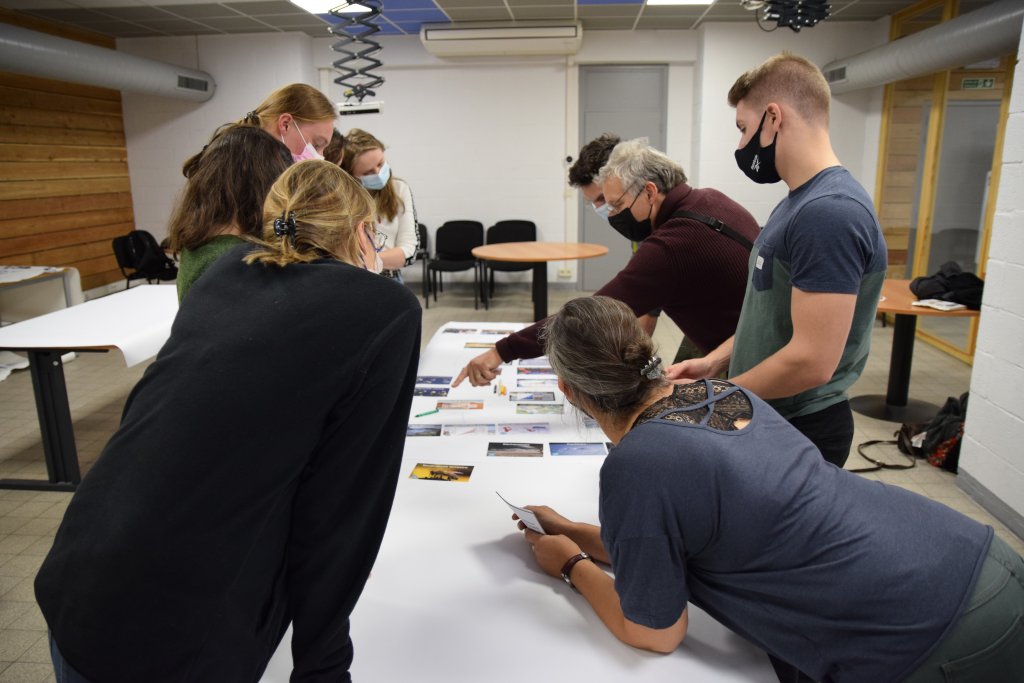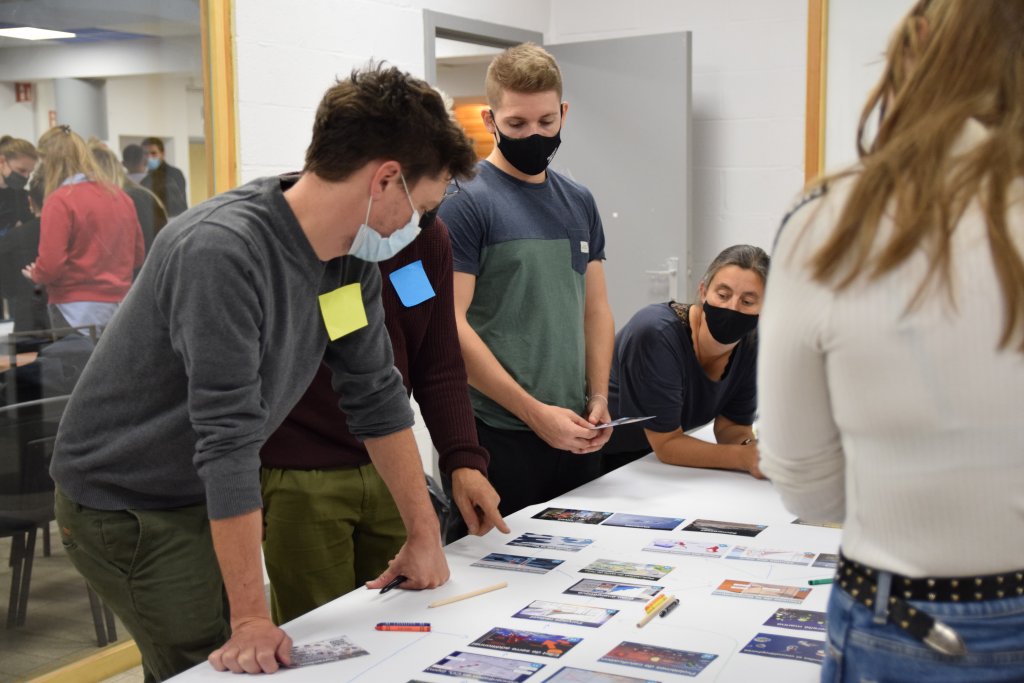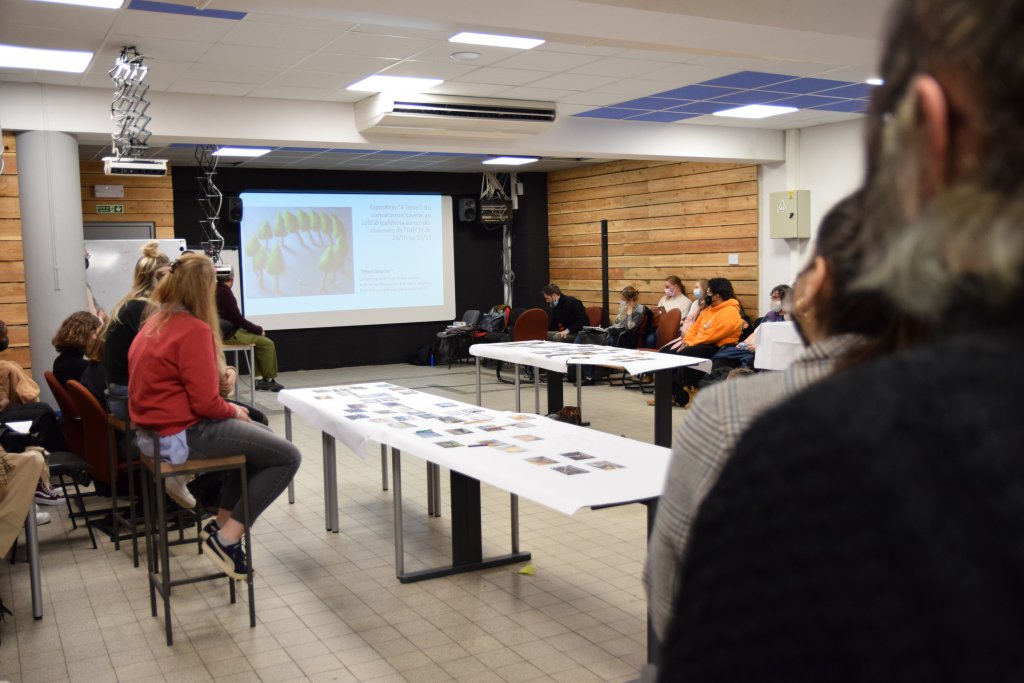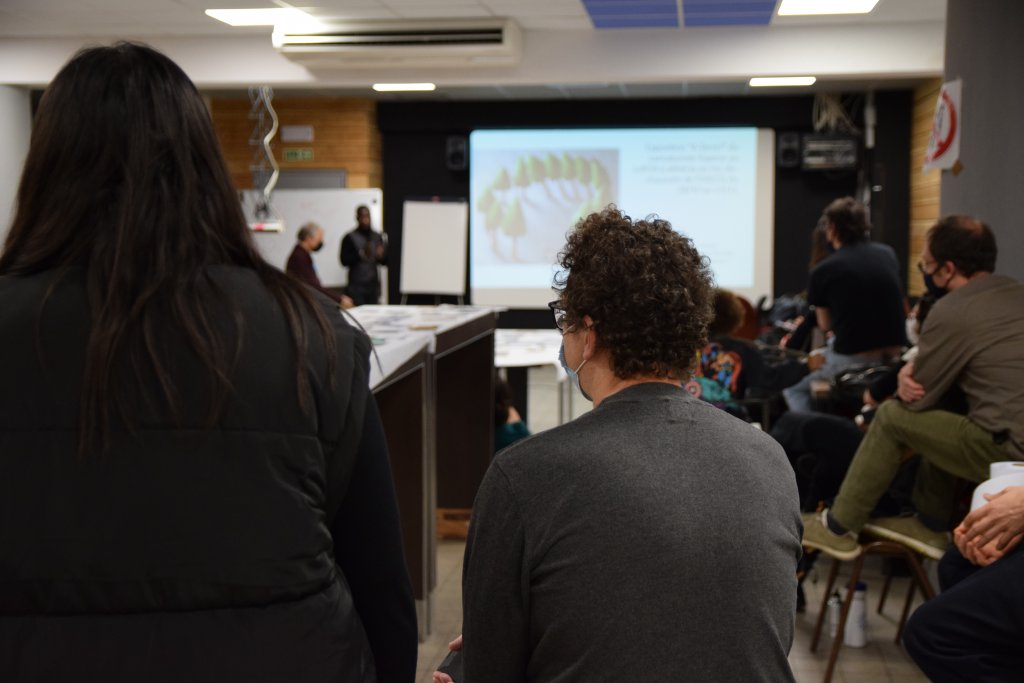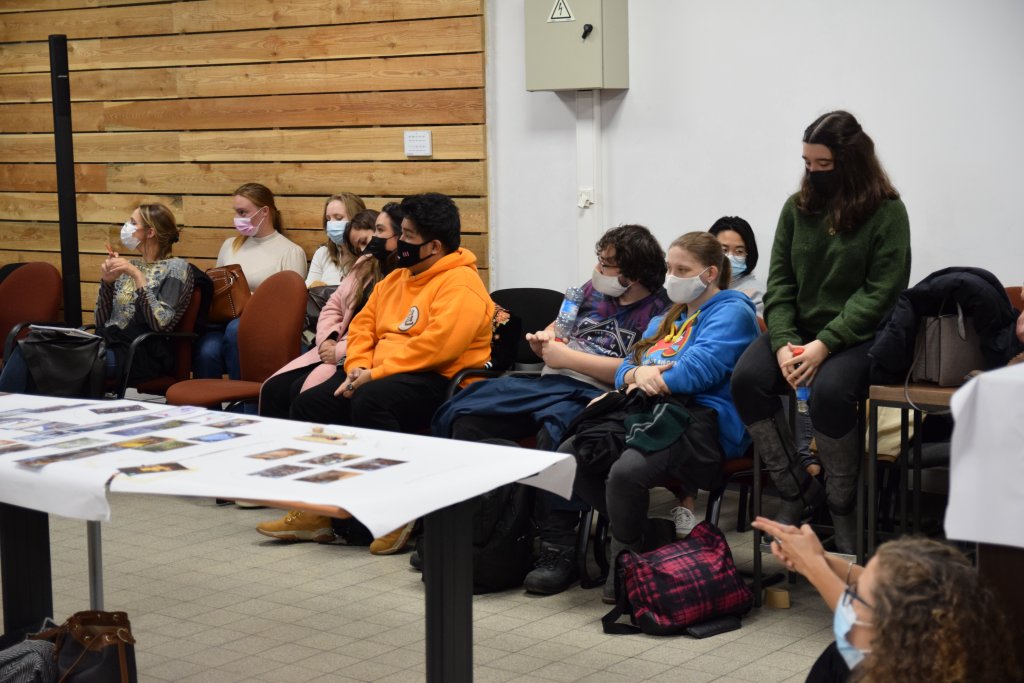The Climate Fresco to train students in climate issues
About a hundred students participated in the Climate Back-to-School event, which offers higher education establishments the opportunity to receive training on climate issues. To do this, they had the chance to take part in the Climate Fresco, a fun science popularisation workshop that helps participants understand how climate change works.
It consists of a set of 42 maps compiled from data collected by the Intergovernmental Panel on Climate Change (IPCC). The goal is simple: the maps have to be placed on a table and linked together to form a fresco that showcases the causes and consequences of climate change.
HEG facilitators
The workshop was supervised by employees from all departments of HEG who had received training as facilitators. They provided explanations and ensured robust communication between the students. In particular they explained why the melting of the sea ice is not linked to rising sea levels.
The participants spent 90 minutes viewing the data on the various maps and reconstructing the causal links. They were then able to unleash their creativity by drawing links and illustrating the fresco. The activity ended with a discussion on potential concrete courses of action.
An alarming report
The Climate Fresco association was founded in 2018 by Frenchman Cédric Ringenbach with the aim of raising awareness of global warming to as many people as possible around the world. According to the latest report, published last August, the observed changes in the climate have been unprecedented for thousands of years. Some of these changes that are already occurring are irreversible over centuries or even millenia.
It should be noted that this initiative, the brainchild of IHECS and, more particularly, Adrien Jahier, was made possible thanks to the funding granted by ARES and the support of the authorities at Haute École Galilée.
Source: HEG.
